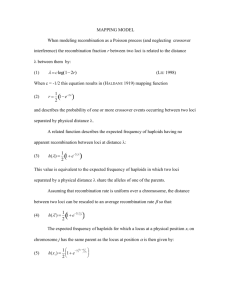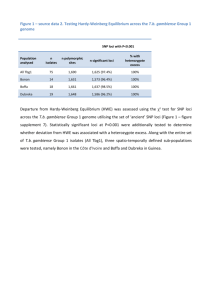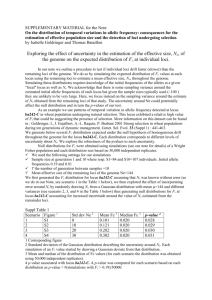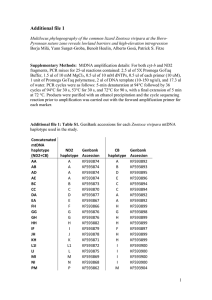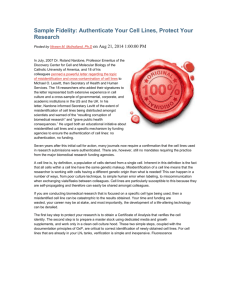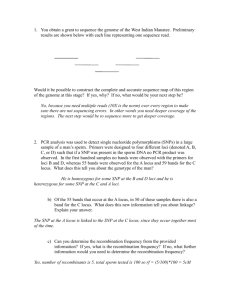Chapter 10 Practice Problems
advertisement
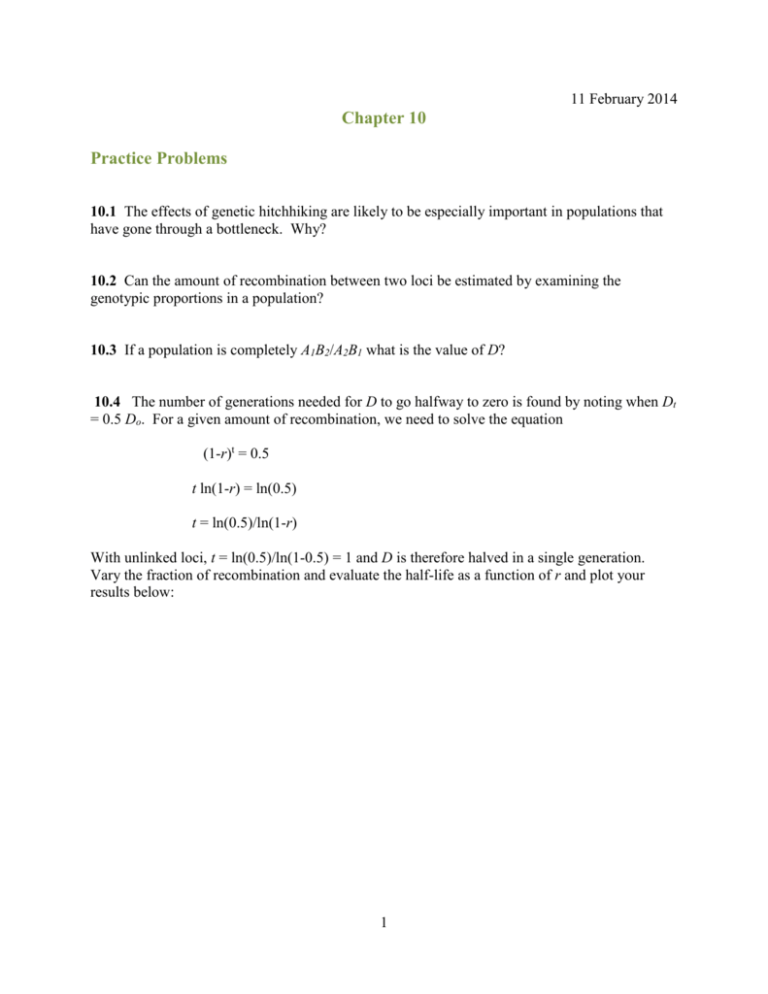
11 February 2014 Chapter 10 Practice Problems 10.1 The effects of genetic hitchhiking are likely to be especially important in populations that have gone through a bottleneck. Why? 10.2 Can the amount of recombination between two loci be estimated by examining the genotypic proportions in a population? 10.3 If a population is completely A1B2/A2B1 what is the value of D? 10.4 The number of generations needed for D to go halfway to zero is found by noting when Dt = 0.5 Do. For a given amount of recombination, we need to solve the equation (1-r)t = 0.5 t ln(1-r) = ln(0.5) t = ln(0.5)/ln(1-r) With unlinked loci, t = ln(0.5)/ln(1-0.5) = 1 and D is therefore halved in a single generation. Vary the fraction of recombination and evaluate the half-life as a function of r and plot your results below: 1 10.5 What would you consider a small fraction of recombination? Hint: Examine your answer to the previous problem and Figure 10.2. 10.6 Given heterozygous advantage at one locus (A) and selective neutrality at the other (B) as shown below. What are the marginal fitness at locus B when D = +0.25 and the allele frequencies at locus A are at equilibrium? How about if D = -0.25? AA Aa aa BB w11=0.8 w13=1.0 w33=0.8 Bb w11=0.8 w13=1.0 w33=0.8 bb w11=0.8 w13=1.0 w33=0.8 10.7 Given that strong gametic disequilibrium was observed between alleles at two loci in different populations, how would you design a research program to determine the cause of this association? 2 Assignment Problems 10.8 Several of studies have found a positive correlation between multiple locus heterozygosity and measures of fitness in a variety of species (Chapman et al. 2009). How can such correlations be explained? How could you distinguish among alternative possible explanations for such correlations? 10.9 We saw in Example 10.3 that parental types persisted in a hybrid zone between two species of field crickets because of assortative mating between parental types. We should be able to see this by testing for Hardy-Weinberg proportions for the genotype frequencies presented at three loci in Figure 10.6. For example, at locus pUC5, the genotype numbers are 12 FF, 6 FP, and 7 PP. Test all three loci in this figure for Hardy-Weinberg proportions. Do your results support the author’s conclusion of assortative mating between parental types? 10.10 Example 10.4 considers hybrid swarms of trout that appear to be mating at random. Test the two loci shown in Example 10.4 for Hardy-Weinberg proportions. Does the population from which this sample was taken appear to be mating at random? Estimate D from this genotypic table using the eight genotypic classes for which gametes can be unambiguously defined. How does your estimate compare to EM estimate provided in the example? 3
